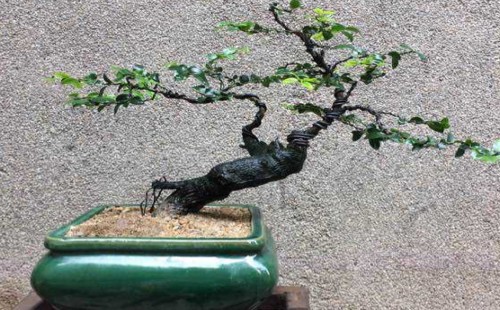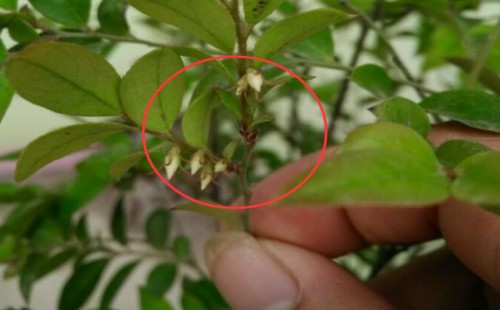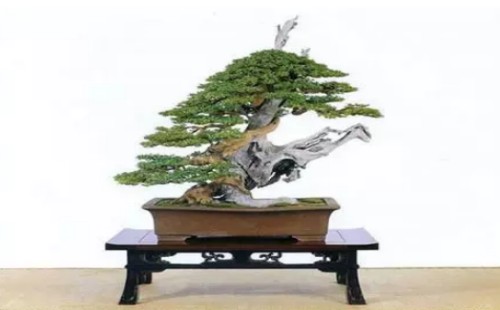Is the bonsai of black bone tea hardy?
Black bone tea also has a better name-black bone incense, is a four-season evergreen tree species, due to relatively rare wild, artificial breeding difficulties, so once became a rare tree species, the price in the market for a long time high, perhaps in short supply is one of the most important reasons! Of course, there are many factors that cause the phenomenon that supply falls short of demand, such as black bone tea grows very slowly, even slower than boxwood, and even if it is cultivated artificially, it is more difficult to form one day, coupled with a small number in the wild. The high ornamental value of bonsai production and other reasons often make it extremely precious.

Black bone tea has the characteristics of adequate light, smooth ventilation, drought and barren tolerance, so although it grows slowly, it is also easy to raise. It can be seen that black bone tea still prefers a warm growing environment, while the temperature in southern China is generally mild throughout the year, so it is generally more suitable for growing black bone tea. So, is the bonsai of black bone tea hardy? Is it possible to grow crops in the north?
In fact, when black bone tea is cold-resistant, it is often considered in terms of temperature in its growth habits. There is no doubt that black bone tea likes light and warmth, so its cold resistance is relatively poor. It is generally appropriate to provide it with a temperature environment of about 20 °C, but it is found in practice that keeping the temperature above 5 °C for a long time often does not affect its normal growth. And if the temperature of 0 °C-2 °C is maintained in the short term, it can often survive, but if it is kept in such a low temperature environment for a long time, freezing damage will occur. However, if the temperature drops below 0 °C, it is not only prone to freezing injury, but also the risk of freezing to death.
The editor also looked it up online recently and found that potted friends have different opinions on the minimum temperature for black bone tea bonsai to survive the winter, perhaps due to different climatic conditions in different regions. However, in order to ensure the safe growth of black bone tea bonsai, in general, when the winter temperature drops to 8 °C, it should be moved indoors for maintenance, otherwise the leaves will be lost due to low temperature and large temperature difference. However, for more safety, it is recommended that it be moved to indoor maintenance when the temperature drops to 10 °C to ensure that it can survive the winter safely and smoothly.
Through the above exposition, I believe we already have a bottom in mind. In fact, the cold tolerance of black bone tea is relatively poor, and the lowest temperature it can bear should be 0 °C-2 °C. compared with many other tree species with strong cold tolerance, it can be said that it is not cold-tolerant. Combined with the editor's experience in growing black bone tea bonsai, the editor suggests that the temperature and humidity of growing black bone tea bonsai should be kept above 20 °C and 70% respectively. Therefore, when the temperature drops in winter, we must take measures to prevent cold and keep warm in advance to avoid the adverse effects on the bonsai of black bone tea due to low temperature.
Time: 2019-05-22 Click:
- Prev

Will the bonsai of black bone tea blossom? when will it bloom?
Black bone tea, also known as black bone incense, is an upstart in bonsai trees in recent years. Although its branches and roots are black, it is hard, dignified and elegant, which is why it is given the name of black bone. Black bone tea not only has a beautiful tree shape, but also keeps it green all the year round, and it has a small number in the wild.
- Next

Environmental requirements for bonsai growth
The finch plum has strong adaptability to the environment, has tenacious vitality and germination, and the tree shape is strange, and because of this, people often make it into a bonsai appreciation for this characteristic. And in fact, finch plum is indeed a very good bonsai good material, in many places can see its shadow
Related
- Fuxing push coffee new agricultural production and marketing class: lack of small-scale processing plants
- Jujube rice field leisure farm deep ploughing Yilan for five years to create a space for organic food and play
- Nongyu Farm-A trial of organic papaya for brave women with advanced technology
- Four points for attention in the prevention and control of diseases and insect pests of edible fungi
- How to add nutrient solution to Edible Fungi
- Is there any good way to control edible fungus mites?
- Open Inoculation Technology of Edible Fungi
- Is there any clever way to use fertilizer for edible fungus in winter?
- What agents are used to kill the pathogens of edible fungi in the mushroom shed?
- Rapid drying of Edible Fungi

